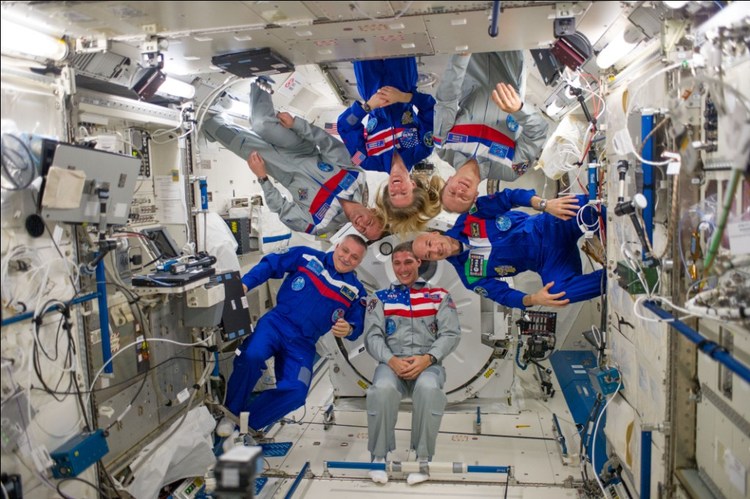Cool space question
Classical Mechanics
Level
3
 Why do the astronauts aboard the aboard the International Space Station experience weightlessness?
Why do the astronauts aboard the aboard the International Space Station experience weightlessness?
None
They jump simultaneously to give us the impression.
They wear anti-gravity shoes.
Gravity is absent in space.
This section requires Javascript.
You are seeing this because something didn't load right. We suggest you, (a) try
refreshing the page, (b) enabling javascript if it is disabled on your browser and,
finally, (c)
loading the
non-javascript version of this page
. We're sorry about the hassle.
Although the Earth's gravity has a lesser effect on an astronaut orbiting the Earth in a spaceship than on a person on the surface of the Earth, this is not the reason why an astronaut experiences weightlessness.
The space shuttle, International Space Station and most other manned vehicles don't get that far from the Earth. The Earth's gravitational attraction at those altitudes is only about 11% less than it is at the Earth's surface.
If you had a ladder that could reach as high as the shuttle's orbit, your weight would be 11% less at the top. Put another way, a person who weighs 100 pounds on the Earth's surface would weigh about 89 pounds at the top of the ladder.
The reason why the person wouldn't feel weightless is because they are being pushed by the ladder - it is keeping them from falling.
If they were to jump off the ladder, then they would feel weightless, at least up until the time they splatted on the ground.
This is why astronauts feel weightless. The astronaut, the spaceship and everything inside it are falling towards the Earth.
The reason why the astronaut doesn't go splat is because the Earth is curved and the astronaut, the spaceship and everything inside it are moving 'sideways' fast enough that, as they fall towards the Earth, the surface of the Earth curves away from them.
They are always falling towards the Earth, but they never get there.
By the way it was really a "Cool space question"
Source